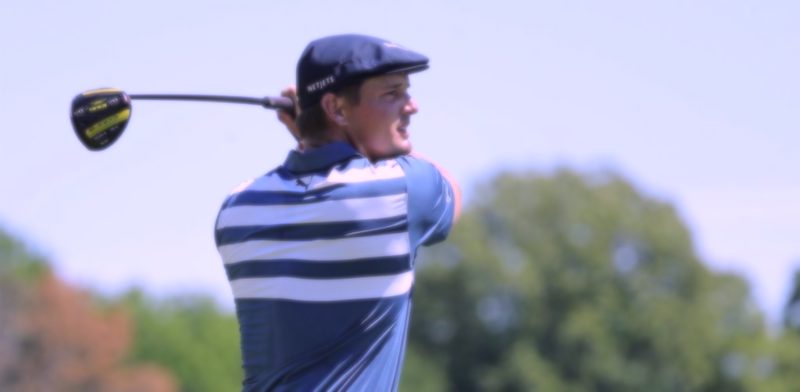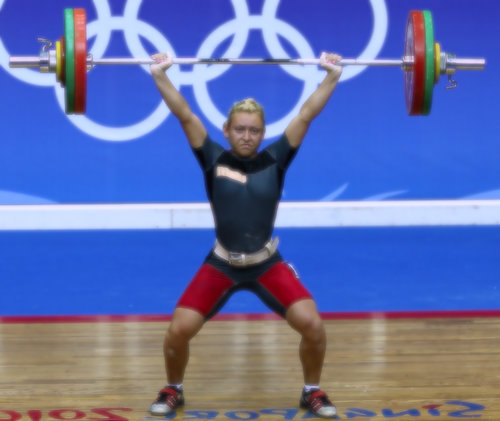Very rarely in discussing how to improve performance in a sport, do people talk about the applicability of those things younger athletes do in applicability to those over 50.
Take golfer Bryson DeChambeau.

He went on a different conditioning program, gained a fair amount of muscle and is now averaging drives of 322 yards on tour. He now weighs 235 pounds. Let’s look at power as a calculation of body weight/muscular mass versus distance in golf. That is a good way to determine if these things are revolutionary.
Justin Thomas weighs 160 pounds, and his drives are 302 yards. If we look at the ratio of yards per pound of weight, Thomas has a power ratio of 1.88 yards per pound of body weight. Another example is Rory McIlroy. He also checks in at 160 pounds, and his average drives are 318 yards. His power ratio is 1.98 yards per pound of body weight.
Yes, a few more yards might able a golfer to hit over certain obstacles and get closer to the hole. This could enhance the chances of the second or third shot being more productive in terms of scoring.
DeChambeau drives the ball an average 322 yards and weighs 235 pounds. His ratio is 1.37 yards per pound of body weight. Quite a bit less than the other two golfers described. What’s the conclusion?
First, golf performance and power have a mechanical swing connection. It is not all about gaining muscle mass. Up to a point muscle mass helps, however power is defined as how much force the muscles and sets of joints can move quickly through a resistance. Power = Speed through a resistance/distance. And, in physiology numerous studies have shown that more muscle mass is not always more powerful in application.
Another consideration is the more the sport movement is outside the parameters of sound technique, the more the athlete needs to train just to keep up with those athletes with what is considered optimal technique. Since DeChambeau is a very different in playing with single length irons versus progressive lengths, maybe the conditioning is needed just to bring mechanics and performance to a reasonable level to overcome the issues with single length clubs.
Athletes tend to get stuck in physical training ruts. That is an important consideration in golf performance because training adds a dimension of coordination or neurological activation. This is often seen when an athlete changes their training style and regime, and performance increases for a while. Then it decreases not because the training program is not effective, but for the simple reason that coordination and body awareness benefits decrease.
Periodization, or the science of how to change training variables and cycles for optimal improvement originally started with Olympic Weightlifting. The concepts then spread to strength/power sports such as football. In the last 10 years, sport scientists have begun the quantification process of how best to apply these concepts to other sports where there is a strong coordination component. In the realm of golf, most trainers and physical therapists don’t possess the understanding and application of how training interacts with the coordination dimension. In short, the professional golfer hits so many golf balls they almost get “numb” to how the body moves, and how they can feel parts of the swing. The new training program might not be different in terms of the muscles yet might positively impact coordination and body awareness.
This dimension is critical, but almost never applied, and can be seen in how a player has great performances for a short period of time, say two or three months. Then performance wanes, not because of lack of effort or desire. Simply described, they don’t have the same body awareness they did when they started the new training program.
Is there a simple answer without hiring a $600 per hour “training guru”? First, being consistent with physical training as a base every week is important for golfers over 50. With a broad conceptual brush, two resistance sessions per week, three energy system session. Needed core training and flexibility addressed as separate sessions based upon individual needs.
In resistance training, it is important to give the system some training variation. For some people, just reversing the exercise order will heighten body awareness and effects. Some days, just perform the exercise with a lighter load and more repetitions. The reverse is true as well, some days up the load and perform more repetitions. Especially important to keep access to the fast twitch or power muscle fibers. Altering speed and stance helps with coordination as well. In the end, it is a function of what you have in terms of equipment access, knowledge of how to safely perform the exercise (s) and the overall training progression. In the world of performance enhancement, important to have a guru and not a gnu in this sense!

No, you should not do what tour players do! First, when you are 25 everything works, and you make a very quick training adaptation. Over 50, that training adaptation crawls to a halt and takes almost 40% longer. In the case of building muscle, somewhat easy to do under 30 and incredibly difficult to do over the age of 50. What DeChambeau did is not helpful over 50, and highly unlikely you can achieve this no matter the effort level.
Possibly the key consideration over 50 is recovery. It simply takes almost 40% more time to recover from any kind of moderate exercise or greater. That means walking a hilly course the first time when you haven’t in a while will be debilitating for a couple of days. You are best having at least one day off from exercise per week and then one light day of just core training and flexibility.
Consistency first, variability second and recovery third will make your physical training for golf have maximum benefits if you are over 50.
Select References
van der Kruk E, van der Helm FCT, Veeger HEJ, Schwab AL. Power in sports: A literature review on the application, assumptions, and terminology of mechanical power in sport research. J Biomech. 2018;79:1-14.
Taborri J, Keogh J, Kos A, et al. Sport Biomechanics Applications Using Inertial, Force, and EMG Sensors: A Literature Overview. Appl Bionics Biomech. 2020;2020:2041549.
Khuyagbaatar B, Purevsuren T, Kim YH. Kinematic determinants of performance parameters during golf swing. Proc Inst Mech Eng H. 2019;233(5):554-561.
Mun F, Suh SW, Park HJ, Choi A. Kinematic relationship between rotation of lumbar spine and hip joints during golf swing in professional golfers. Biomed Eng Online. 2015;14:41.
Kawamori N, Haff GG. The optimal training load for the development of muscular power. J Strength Cond Res. 2004;18(3):675-684
Cronin JB, McNair PJ, Marshall RN. Is velocity-specific strength training important in improving functional performance?. J Sports Med Phys Fitness. 2002;42(3):267-273.
Kraemer WJ, Duncan ND, Volek JS. Resistance training and elite athletes: adaptations and program considerations. J Orthop Sports Phys Ther. 1998;28(2):110-119.
Otte FW, Millar SK, Klatt S. Skill Training Periodization in “Specialist” Sports Coaching-An Introduction of the “PoST” Framework for Skill Development. Front Sports Act Living. 2019;1:61.
Williams TD, Tolusso DV, Fedewa MV, Esco MR. Comparison of Periodized and Non-Periodized Resistance Training on Maximal Strength: A Meta-Analysis. Sports Med. 2017;47(10):2083-2100.
Evans JW. Periodized Resistance Training for Enhancing Skeletal Muscle Hypertrophy and Strength: A Mini-Review. Front Physiol. 2019;10:13.
Mujika I, Halson S, Burke LM, Balagué G, Farrow D. An Integrated, Multifactorial Approach to Periodization for Optimal Performance in Individual and Team Sports. Int J Sports Physiol Perform. 2018;13(5):538-561.
Hartmann H, Wirth K, Keiner M, Mickel C, Sander A, Szilvas E. Short-term Periodization Models: Effects on Strength and Speed-strength Performance. Sports Med. 2015;45(10):1373-1386.